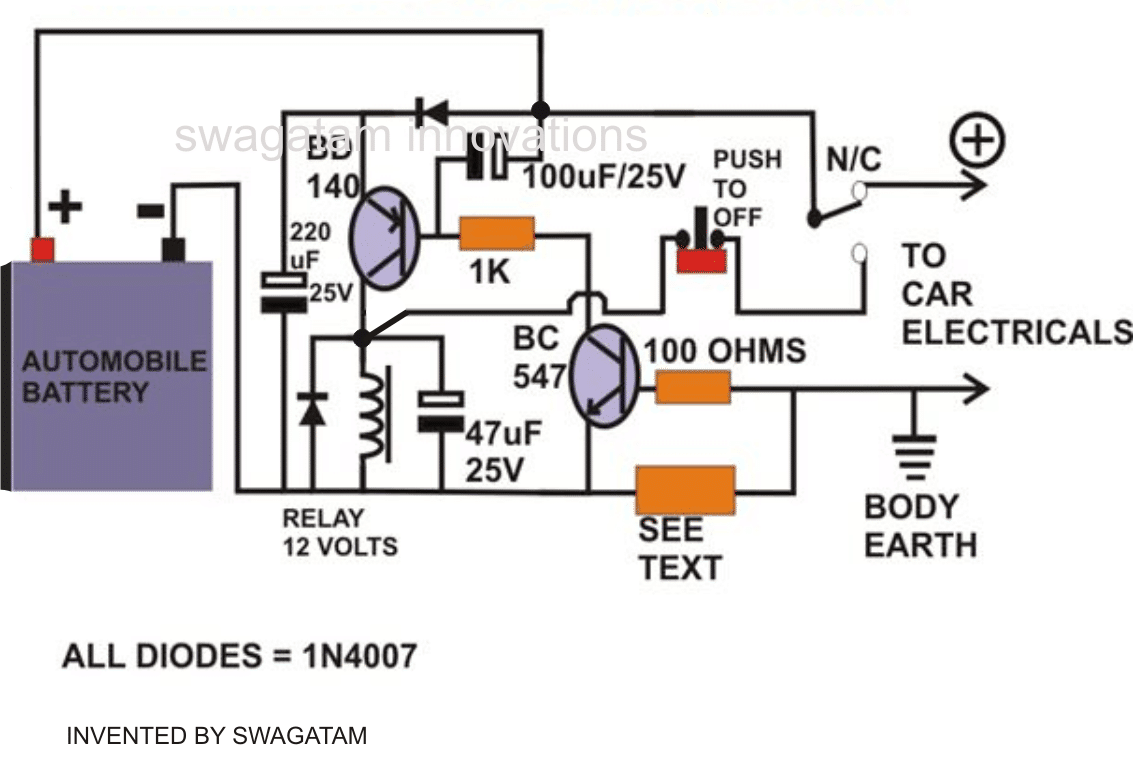In this article we investigate a electronic circuit design which works like a conventional fuse for safeguarding any electrical system from overloads, over-current, short circuit and related fire hazards.
However, the main advantage of this electronic fuse is that it does not require frequent replacements like mechanical fuses, instead it can be reset with a single push of a button.
What is a Fuse
A fuse is a device used in electrical wiring for preventing accidental fire hazards due to to a short circuit or overloads. In ordinary mechanical type of fuses, a special fusible wire is used which melts when there's short circuit at some point in the wiring.
Though such fuses are fairly reliable, are surely not so efficient or elegant with their performance.
A mechanical fusible type of fuse requires careful selection as far as the rating is concerned and once blown, again requires careful replacement of the device correctly.
Even automobiles incorporate largely the above fusible types of fuses for the discussed precautions concerns.
However the above inefficient fuse can be very effectively replaced with more versatile types of electronic fuse circuit with little consideration.
Main Features
If you search for an electronic fuse circuit online, you may come across a few very ordinary designs which actually have no ability to handle high current short circuits or overloads.
These circuits are created by school kids and cannot be used for serious applications.
The design presented below uses a relay and is capable of supporting high current short circuits up to 5 amps or even 10 amps.
This makes the design suitable for almost all high current DC circuits which demand a fool-proof short circuit protection.
How this Electronic Fuse Works
The idea has been exclusively developed by me and the test results were pretty impressive.
The CIRCUIT DIAGRAM is very simple, a relay is used to switch the battery power to the rest of the electrical of the vehicle via its contacts.
A low value resistor is placed across the base emitter of a transistor for sensing the rise in the current levels.
When a possible short circuit is sensed, an equivalent amount of voltage is developed across this low value resistor, this voltage becomes responsible for instantly triggering the transistor which in turn triggers the relay driver stage.
The relay quickly reverts and switches OFF the supply to the vehicle electrical.
However in the process it also latches itself so that it does not go into an oscillating mode.
The relay contacts must be rated to handle the maximum allowable current specified for the vehicle's normal needs.
Sensing Resistor
The value of the sensing resistor should be carefully selected for the intended tripping operations at the correct over load levels.
I used an iron wire (1mm thick, 6 turns, 1 inch diameter) in place of the sensing resistor and it could handle well up to 4 amps after which it forced the relay to trip.
For higher currents lower number of turns may be tried.
To be precise, the sensing resistor could be calculated using the formula:
- Rx = 0.6 / Cut Off Current
- Rx Wattage = 0.6 x Cut Off Current
The "push to OFF" switch is used to reset the circuit, but only after the short circuit condition is properly rectified.
A simple electronic fuse circuit developed by me is shown below:

Another Simple Electronic Fuse
The electronic fuse signifies that load current is shut off as soon as an overload is detected. Actually it simply restricts the load current to a magnitude of certain amps. The next circuit will basically trigger the load current to drop to 0 %.
In case it rises, causes IL x R2 > 0.7V/R2, Q4 to switch on, delivering base current to Q3. Q4 as a result activates, providing additional base current for Q4.

Regenerative function goes on until eventually Q4 and Q3 are saturated. Q3 will subsequently take off all base current from Q1, consequently turning Q2 off and enabling the load to be safe from over current.
In case the reset button is pressed, the entire current drive shall be taken off from Q3 and Q4, causing them to be void of saturation.
As soon as the reset button i released, the circuit is going to either go back to original situation in case the overload situation has been eliminated, or will click off yet again in case it is still existing.
Care must be observed with the "grounding" to prevent shorting of R2.
